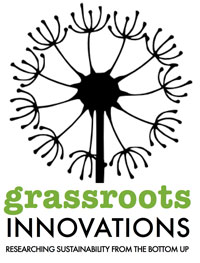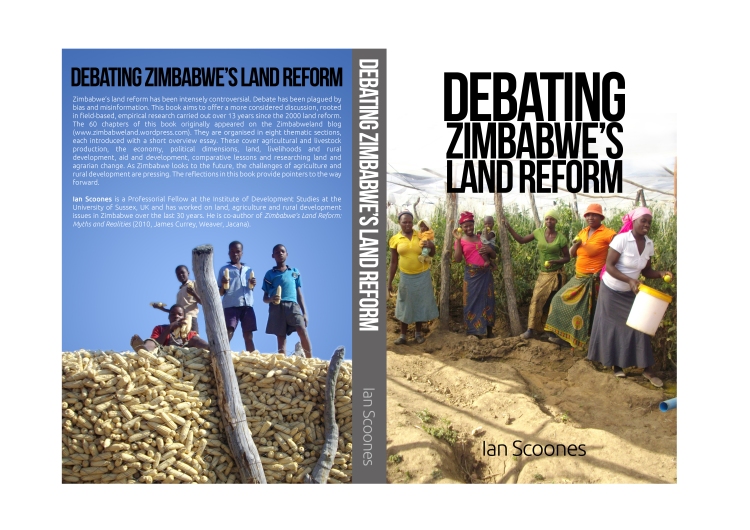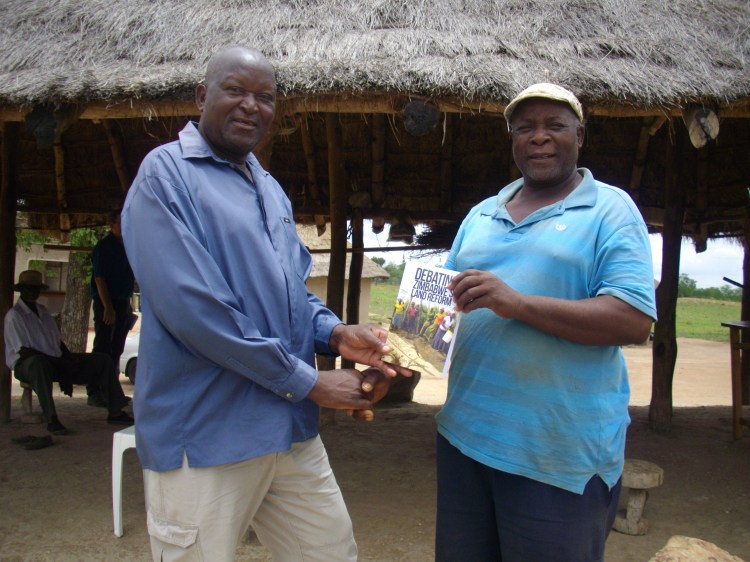The Alliance for a Green Revolution in Africa (AGRA) recently published its first annual report on the status of African agriculture. AGRA’s report looks at staple crop production and reviews the status of production support to African farmers.
AGRA believes the biggest problem in African agriculture is low productivity. It identifies two main constraints to increasing productivity:
- On the input side, African farmers are using old technologies that are not well-suited to increasing productivity. AGRA identifies seed and soil fertility as the two major issues. It proposes the use of ‘improved’ seed and the introduction of synthetic fertilisers as the supply side solution. This requires institutional, infrastructural and legal interventions.
- On the demand side, AGRA identifies lack of commercial markets as a constraint to increasing productivity. It argues that the slow uptake of new technologies is primarily the result of limited output markets which can allow farmers to earn an income to cover the costs of increased inputs.
In the 1980s the World Bank was criticised for its ‘one-size-fits-all’ solution that did not take into account the irreducible ecological and social complexity of African farming systems. The logic that sales from increased yields would more than cover the cost of increased input costs proved to be incorrect. The World Bank plan focused on exports as a commercial market. But the value of export crops declined and farmers were unable to cover input costs. As a result, fertiliser use in most of sub-Saharan Africa remains low compared to other parts of the world. There was some adoption of hybrids seed, especially maize, but seed R&D focused on crops with perceived commercial potential at the expense of the wide variety of plants being grown for food in Africa.
In the 1990s support for agriculture in Africa declined severely as countries diverted resources to paying off debts. However, as commodity prices rose in the early 2000s, there was renewed interest in African agriculture as a potential commercial activity. Domestic markets were bigger than in the 1980s and constituted a potential outlet for increased production.
Nevertheless, there has not been a flood of investment in African agriculture. AGRA’s report shows that less than 0.1% of investment in agriculture was from foreign direct investment from 2005-2007. Farmers’ own investments in infrastructure and production, mainly in the form of labour, dwarf other sources of investment.
AGRA is attempting a ‘proof of concept’
AGRA should be understood as a political project, a ‘proof of concept’ to show private owners of capital that there are profitable opportunities for investment in African agriculture. This requires major institutional and infrastructural interventions. AGRA’s aim is to identify and facilitate priority interventions, drawing on philanthropic, state and private sector resources. Its fundamental approach is the public-private partnership (PPP) where the state and private sector contribute to realising common objectives (private profit through increasing productivity). AGRA works closely with the Comprehensive African Agricultural Development Programme (CAADP), the framework for agricultural investment located in the African Union and its member states.
The Status Report includes sections on productivity, growth and competitiveness; soil health; seed systems; financing; output markets; policy environment; farmer organisation; capacity development; women; and extension and advisory services.
Land and soil
The section on land provides a broad overview of the various tenure issues in Africa. The report recognises the importance of customary tenure systems but in many places indicates that for commercial production, private ownership of land is the best model. AGRA surveyed a number of East and Southern African countries and found that average landholdings were less than 3 ha in most countries. AGRA therefore orients its support towards small-scale agriculture, but to a commercial layer who will have larger than average land sizes. AGRA anticipates that higher investments in land will “induce land holdings to adjust” (p.37), meaning greater concentration amongst commercial producers.
The section on soil health reiterates AGRA’s commitment to the Integrated Soil Fertility Management (ISFM) approach. ISFM calls for a combination of organic and inorganic fertiliser, “not either or none”. However, AGRA’s emphasis is on supporting the introduction of inorganic fertiliser produced elsewhere rather than building up the quality of farm-produced organic fertilisers. According to AGRA, the main reason for farmers’ failure to use more fertiliser is the high cost, which is not covered by higher yields. AGRA calls for (state) subsidies to increase demand, which will ‘incentivise’ supply through “private sector led fertiliser markets” (pp.45-46). AGRA suggests that initial doses of inorganic fertilisers can be reduced over time as increased yields produce increased biomass that can then be fed into on-farm fertiliser production processes (including better quality livestock feed). AGRA supports conservation farming and mixed farming systems rather than monocropping (p.48-49). One task facing farmer support organisations is to monitor what AGRA is doing and perhaps to put forward an argument in favour of diverting resources to improving existing on-farm fertiliser production systems rather than orienting expenditure to constructing supply chains that rely on external, capital-intensive manufacturing processes.
Seed law harmonisation and the threat to farmers’ rights
The section on seed is highly problematic and of the greatest concern in the whole report. Although there is recognition of diversity and plurality in seed systems on the continent, AGRA’s orientation is towards commercial production. It therefore calls for the introduction of commercial seed systems, with the ‘ideal’ presented as a concentrated system where a few large companies control seed R&D, production and distribution (p.56). Seed system diversity in Africa is seen as a weakness and as an obstacle to be overcome (p.56). According to the report, weak seed production and distribution throughout the continent hinders the uptake of varieties developed through the formal R&D system (p.54).
The catch, as AGRA recognises, is that in order for commercial seed companies to invest in R&D, they first want to protect their ‘intellectual property’. This requires fundamental restructuring of seed laws to allow for certification systems that not only protect certified varieties, but criminalise all non-certified seed. This is a serious threat to African seed systems and agro-biodiversity, as the African Centre for Biosafety (ACB) and the Alliance for Food Sovereignty in Africa (AFSA), a network of farmer and farmer support organisations, have highlighted in recent publications and releases. AGRA is working with governments and other international and private entities to ‘harmonise’ seed laws across the continent to put in place the institutional systems and structures that will allow private seed companies to control seed. Policy processes in this regard are very advanced through the African Regional Intellectual Property Organisation (ARIPO), the Common Market for Eastern and Southern Africa (Comesa) and other regional bodies. The immediate threat is that farmers’ rights to save and share seed are being criminalised by the new laws. Farmers’ rights are encapsulated in International Treaty on Plant Genetic Resources for Food and Agriculture, where they are recognised as an essential component of food systems. The introduction of ‘modernised’ seed systems that protect intellectual property are not merely being introduced alongside existing farmer-based seed systems, but threaten to destroy the latter. Regional seed trade laws are being altered in similar ways, threatening to outlaw farmer-to-farmer seed sharing across national borders.
The AGRA report deals with genetic modification (GM) only in passing. The report defends GM as rigorously tested, citing industry and government bodies which share the modernisation paradigm as evidence. It reduces public opposition to GM to “fear of the unknown” (p.64-65). Although AGRA currently is not directly involved in sponsoring GM activities, the Bill and Melinda Gates Foundation, one of AGRA’s founders and primary sponsors, invests heavily in GM R&D on the continent and owns shares in Monsanto.
Financing and output markets: part two of the scheme
The section on financing shows that most investment in African agriculture comes from farmers themselves. Despite their own declarations, national governments generally continue to invest less than the 10% of GDP called for in the Maputo Declaration of 2003 (pdf). AGRA’s solution is for the state to guarantee loans made to farmers, i.e. the public sector carries private sector risk.
On output markets, AGRA diverges from the World Bank’s prescriptions in the 1980s by focusing first on domestic and regional markets rather than export markets. This is a step in the right direction. However, AGRA’s focus on commercialising markets means the imposition of mechanisms that externalise control. AGRA reviews the experience with warehouse receipt systems (WRS) and agricultural commodity exchanges as two key commercial market mechanisms. WRS operate by allowing farmers to store their grain in warehouses for a fee but to get paid up front for a portion of the value of the crop. Commodity exchanges allow for hedging which can stabilise prices and reduce risk (although they can also be conduits for speculation and increased volatility if institutional investors trading in derivatives dominate the market). The experience so far is not of great success. AGRA provides a number of reasons for this, most of which relate to regulation and sequencing of interventions. AGRA assigns a major role to the state in regulating and underwriting these systems.
On farmer organisation, AGRA recognises the fundamental importance of farmer organisation, but tends to focus on organisational activities to support commercialisation of production: providing members with services, enhancing collective bargaining power through aggregation and economies of scale, and enhancing farmer participation in processes affecting them (p.114). While these are important issues for farmer organisations to deal with, there may be other issues facing members who are not oriented primarily to commercial production. Organisation therefore needs to deal with a wider range of issues to meet different needs of different categories of farmers. Food sovereignty advocates should focus on working with any farmer organisations that are open to dialogue, with the aim of introducing and elaborating on ecological agriculture/agroecological methodologies together with farmer members and their organisations.
There are small sections on capacity development, extension services and women. These tend to give an overview of the state of affairs (limited reach and limited support which is not always appropriate to context) and make very broad recommendations about the need to increase capacity and numbers, and for women to have more access. To see what AGRA is actually doing about this will require primary research.
Concluding comments
AGRA is carving out its niche in African agriculture, targeting commercial or potentially commercial farmers, i.e. those who produce primarily for the market, with their agricultural operations structured as a business. There can be no argument that commercial African farmers should be supported to sell into markets. But there are many other producers who are critical to food security in Africa who will not receive support from the AGRA/modernisation project. Other forms of support must be provided for these farmers. In addition, some of AGRA’s interventions (e.g. seed law harmonisation) have a directly negative impact on the ability of these marginalised farmers to improve their conditions of existence, by placing regulatory and legal obstacles in the way of farmer innovation and knowledge and resource sharing.
AGRA’s project is heavily reliant on the state to secure the basic institutional and infrastructural frame for commercialisation. The state provides resources to secure the conditions for private extraction of wealth. This orients public resources away from other potential uses, including resources explicitly directed towards ecological agriculture, building up and enhancing farmers’ existing practices.
The ecological agriculture/food sovereignty alternative is very clear from this analysis. First, start from where farmers are, building up existing practices that do not rely so heavily on external capital-intensive production processes. Seed and soil fertility systems as currently practices may not be ideal, but there is a strong base to work from together with farmers. Second, public resources should be channelled into supporting this agenda rather than in securing the conditions for private extraction of value created by African farmers.
For African Centre for Biosafety’s more detailed response to AGRA’s report, read the full report on the ACB website.











